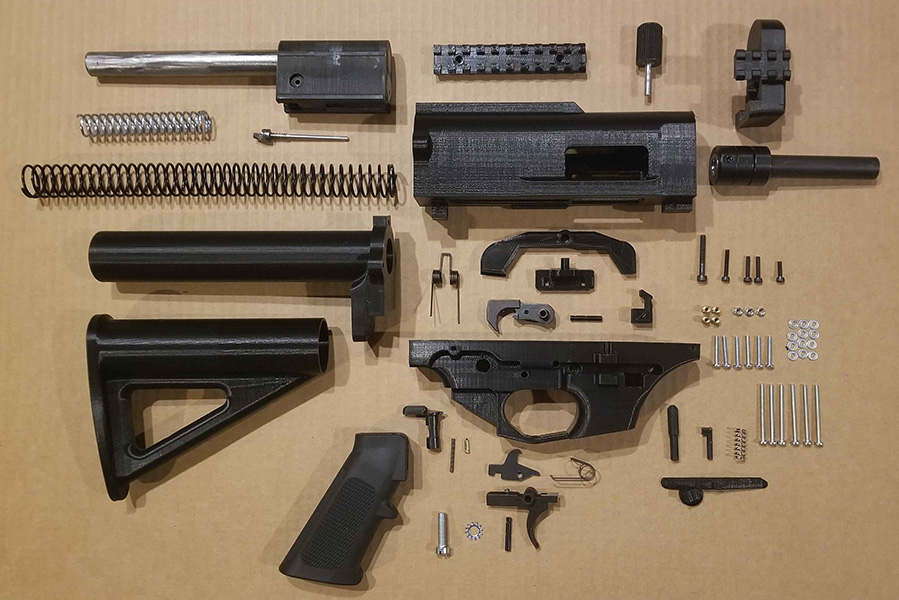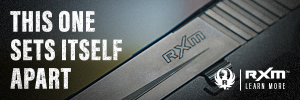
[Viljam] Nyman was working from a blueprint, easily available online, for a model called the FGC-9, which revolutionised the world of 3D-printed weapons when it was published in March 2020. FGC stands for “fuck gun control” and 9 refers to the 9mm bullets it uses. The slogan reflects the ideological leaning of many involved in the development of 3D-printed guns. In an anonymised interview given after the manual was published, the creator of the FGC-9, who posted under the name JStark1809, said, “We fucked gun control for good … Gun control is dead, and we killed it.”
JStark1809 has since been revealed to be Jacob Duygu, a German man of Kurdish origin. In the FGC-9 manifesto, he called on people “to defend yourself and not be a victim to unjust firearm legislation any longer”. Elsewhere, he had posted about being an “incel”. In 2021, he was arrested by the German police. Two days later, he was found dead in a car parked outside his parents’ home in Hanover. He was 28. The German magazine Der Spiegel reported that an autopsy had been unable to determine the cause of death, but foul play and suicide had been ruled out. His mysterious death is the subject of many online conspiracy theories in the 3D-printed gun world. …
The FGC-9 changed everything. Unlike those early models, the FGC-9 includes no regulated components: it can be made using just a 3D printer and parts available from a hardware store; it requires only some metalworking skills. Today, 3D printers are available for a couple of hundred pounds, while strong plastic polymers to print with are relatively inexpensive. The upper and lower receivers of the FGC-9 (the barrel assembly and trigger sections) are fully 3D-printed from plastic, as are the pistol grip and stock. The magazine can also be printed.
Unlike previous 3D-printed gun models, it is a semi-automatic weapon. “It was revolutionary,” says Dr Rajan Basra, a researcher from King’s College London who studies 3D-printed weapons. The FGC-9 is now thought to be the most popular 3D-printed weapon in the world. It is particularly difficult to police, given that it doesn’t involve illegal parts. As Basra says, “You can’t regulate a steel tube or a spring.”
The open-source manual was initially shared among niche gun manufacturing forums but quickly spread across the internet, and the guns have been manufactured around the world. “The guide is incredibly detailed,” Basra says. “There are videos online showing the entire process and the blueprints are shockingly easy to find – you can Google and get them in under five minutes.”
— Samira Shackle in ‘Gun control is dead, and we killed it’: the growing threat of firearms that can be made at home


As it was never illegal for decades for a citizen to make a firearm for their own use, and many folks have taken miscellaneous parts to make a handgun, the use of 3D printing just created yet another push by Liberals to delete the Second Amendment. IF Liberals were truly concerned with controlling illegal firearm use, then why do they push Cashless Bail for felons??? As someone who has worked with CAD/CAM manufacturing for years, there are now CAD/CAM machines that are capable of being purchased by a DIYer, who could recreate firearms like the RESINING 50 or 55, using commercially available items. like hydraulic tubing. Even simpler designs, like the PPs43, or STENs, are easily copied, and easier to recreate than back in the day they were originally designed. FYI – Wonder how many STENs were produced in 1948 by Jewish laundries, while cleaning British uniforms???
Metal printers capable of handling Inconel and stainless steel are available for under $5,000 now.
Instead of pointlessly flailing about attempting to stop the inevitable they really should accept what’s coming and work on management strategies like, oh, I don’t know, stop force mixing incompatible cultures, picking wars with neighboring nations, deepening partisan divides to manipulate political and commercial activity or maybe actually locking up violent people?
“The FGC-9 changed everything. Unlike those early models, the FGC-9 includes no regulated components: it can be made using just a 3D printer and parts available from a hardware store; it requires only some metalworking skills.”
Yeah, about that –
I fully expect them to go after making the pressure-bearing components (like bolts and barrels) the regulated parts needing serial numbers and a background check, the same way some countries in Europe are doing.
They will never, *ever* stop attacking the 2A, it’s the only way to keeping them in power…
“Metal printers capable of handling Inconel and stainless steel are available for under $5,000 now.”
Now that’s cool! The last time I checked, about 10 so years back, they were several hundreds of thousands each.
That’s now close to point where even local ‘maker spaces’ can hope to afford them. Gun control is now well and truly dead…
Shire-man,
Huh. I am wondering how difficult it would be for 20 people to chip-in $250 each and share ownership of a $5000 metal printer.
I suspect that printed metal parts would tend to have very sharp edges which require some type of process to soften those edges. (Tumbling for example???) At any rate, if that is practical, then those 20 people could print pretty much any firearm–and as many as they want–to their heart’s content. The prospect of being able to manufacture any firearm that I want for $250 (plus the cost of the metal powder or wire) is incredibly appealing.
My only question is what (if anything) you would have to do with printed rifling in a printed barrel. I know that professional fabricators who make barrels (and rifle them) have a fairly intensive (and extensive) process to polish the barrel’s inside surfaces (lands and grooves). Would we have to apply a substantially similar process to a printed barrel?